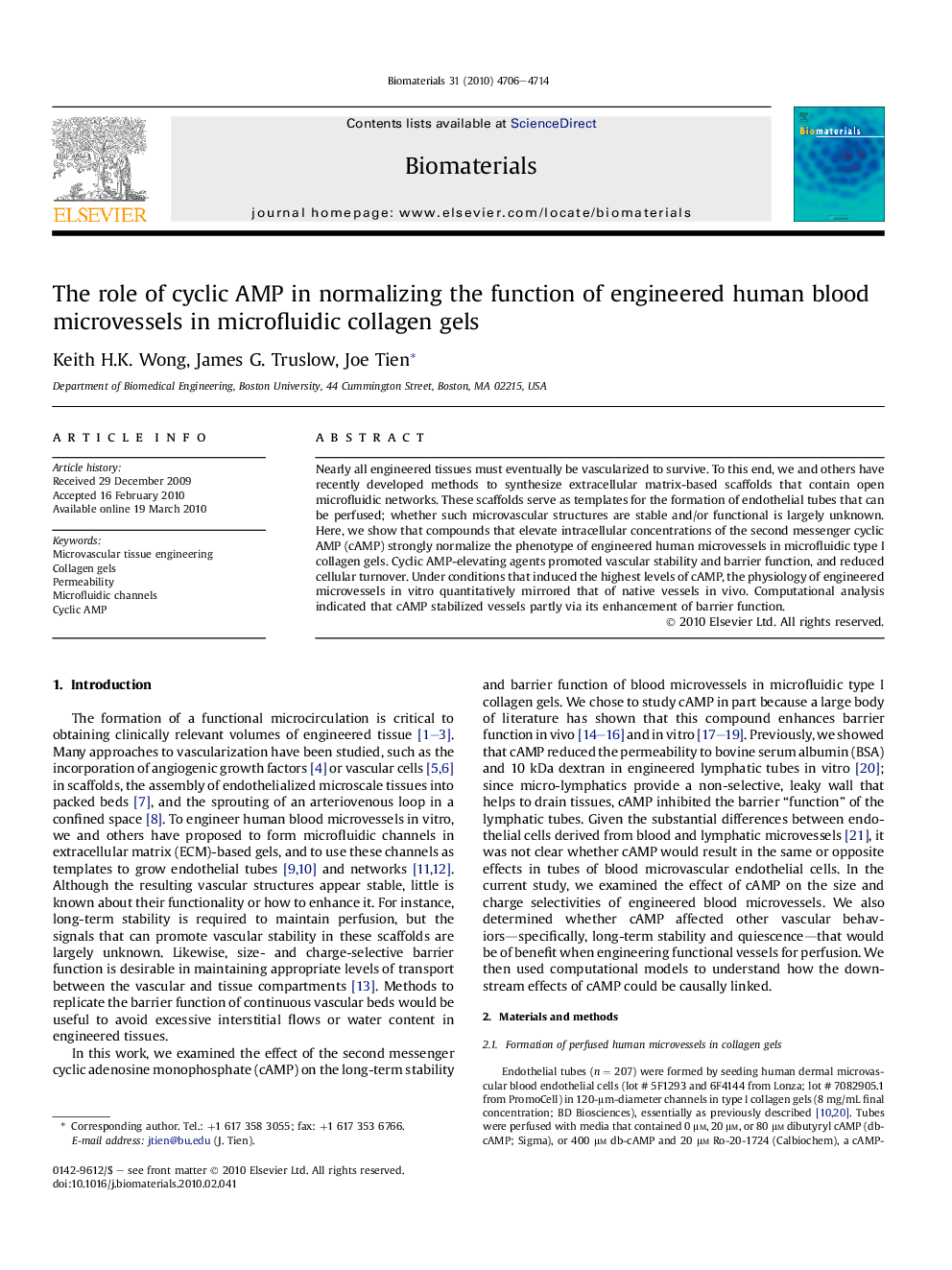| Article ID | Journal | Published Year | Pages | File Type |
|---|---|---|---|---|
| 9632 | Biomaterials | 2010 | 9 Pages |
Nearly all engineered tissues must eventually be vascularized to survive. To this end, we and others have recently developed methods to synthesize extracellular matrix-based scaffolds that contain open microfluidic networks. These scaffolds serve as templates for the formation of endothelial tubes that can be perfused; whether such microvascular structures are stable and/or functional is largely unknown. Here, we show that compounds that elevate intracellular concentrations of the second messenger cyclic AMP (cAMP) strongly normalize the phenotype of engineered human microvessels in microfluidic type I collagen gels. Cyclic AMP-elevating agents promoted vascular stability and barrier function, and reduced cellular turnover. Under conditions that induced the highest levels of cAMP, the physiology of engineered microvessels in vitro quantitatively mirrored that of native vessels in vivo. Computational analysis indicated that cAMP stabilized vessels partly via its enhancement of barrier function.
